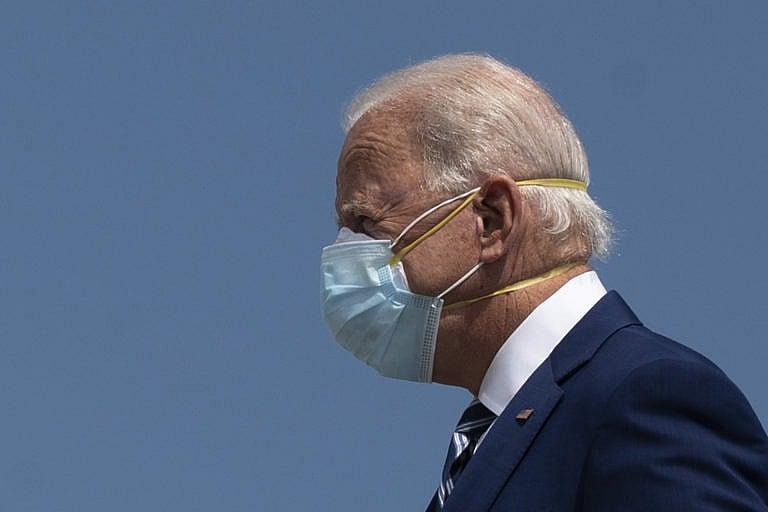Should I be wearing two masks?
With the arrival of new, more contagious variants of COVID-19 in Canada, experts are recommending an upgrade in the quality—and quantity—of our face coverings

President Joe Biden has often been seen wearing two masks. With the arrival of more infectious variants of COVID-19 in Canada, some experts recommend upgrading the quantity and quality of our face coverings. (Photo by JIM WATSON / AFP) (Photo by JIM WATSON/AFP via Getty Images)
Share
Look at photos of President Joe Biden and you’ll notice he often wears two masks: a light cloth or paper one over a heavy-duty N95 mask. “If you have a physical covering with one layer, you put another layer on,” said Dr. Anthony Fauci, who has also frequently worn two masks. “It just makes common sense that it likely would be more effective.”
But there is also some urgency to this shift: With the arrival of new and more contagious variants to Canada, experts are asking everyone to think once again about the quality of our masks and how we use them. “We all need a bit of a reset regarding [COVID-19] precautions,” says Dr. Lynora Saxinger, an infectious diseases physician in Edmonton. “We tend to cut corners and relax when something becomes commonplace.”
For one thing, she says, don’t shove a mask into your pocket after wearing it; if you’re asymptomatic, then the virus will be easily transferred from the mask to your hands. For another, don’t be complacent regarding the type and quality of your face coverings, such as masks that are comfortable to wear because they use porous materials, or neck gaiters, which can easily slip.
RELATED: COVID-19 in Canada: How our battle against the second wave is going
In fact, many of the masks we’re using aren’t as good as they should be. And, unlike last spring when the initial guidance around masks included recommending face coverings of tightly woven fabric, the risk perception has now changed. The new variants are so much more effective at infecting people that it’s time for a refresher course in face protection.
Health Canada’s guidelines emphasize that masks need proper structure, material and fit to reduce the spread of infectious respiratory droplets. For example, Saxinger uses a couple of well-fitted multi-layer fabric masks, each with added filters of polypropylene material which she bought separately, in addition to cycling through lightly-worn medical masks, which she stores in separate envelopes for a few days before using them. And now, unlike in the spring, medical-quality disposable masks as well as more tightly fitted KN95 masks are available through retailers including Costco, health care supply firms and pharmacies (supplies can fluctuate; also, many of the disposable masks and KN95s on the market are not medical grade).
RELATED: 20,000 Canadians have died of COVID-19. Each of their stories teaches us about life.
While there is no official Canadian or U.S. guidance regarding double-masking or the need to upgrade to better quality masks, Germany, Austria and France recently told their residents to upgrade their face coverings from cloth versions to specific medical-grade ones, including KN95s, when they are in public spaces, including stores, or when near others for a prolonged period.
“The more layers the better, as long as they are breathable,” says Saxinger. Doubling up with whatever masks you have—whether two cloth ones, or a cloth and a disposable one—can offer more protection, as they can provide another layer of filtration and force a tighter fit.
RELATED: How much protection does the first dose of the COVID-19 vaccine provide?
In a recent commentary in Med, two experts in the transmission of viruses gave two recommendations to the public: either wear a properly layered, fitted cloth mask or double up and “wear a cloth mask tightly on top of a surgical mask where the surgical mask acts as a filter and the cloth mask provides an additional layer of filtration while improving the fit.”